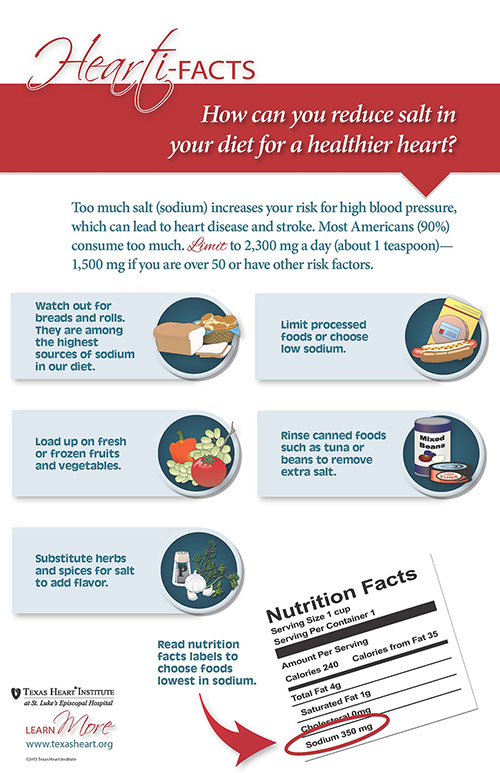
-
Limit the amount of potato chips and other salty snacks that you eat.
-
Try salt-free seasonings.
-
Try using herbs, spices, and other alternatives to salt.
-
Read labels, and look for salt in unexpected places. (Hint: tomato and vegetable-juice cocktails often have a lot of salt.)
-
Try reduced-sodium and salt-free products.
-
Prepare foods with half the amount of salt recommended in the recipe. Or consider leaving out all of the salt in a recipe and letting people add their own. They will probably use only a fraction of the amount called for in the recipe.
-
When eating at a restaurant, ask whether a recipe or serving can be made with less salt or no salt at all.
-
Try a salt substitute. Some are made to help lower blood pressure while giving you important nutrients.
-
Cook rice, pasta, and hot cereals without salt.
-
Rinse canned foods, such as tuna, to remove some of the salt.
See on other sites:
Centers for Disease Control and Prevention
http://www.cdc.gov/salt/index.htm
Most Americans Should Consume Less Sodium
Updated August 2016



